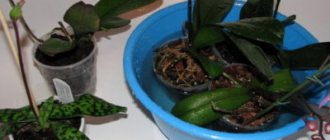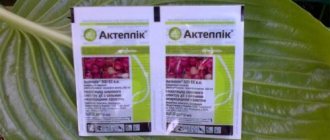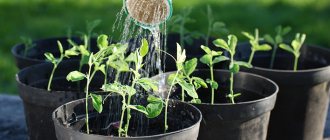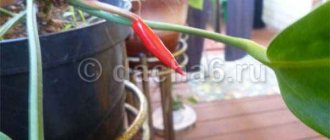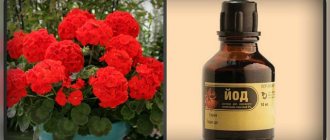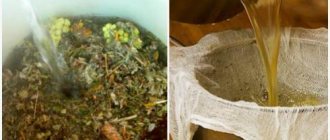Today, more and more gardeners are returning to using time-tested natural methods of plant care. And the soap solution, easy to prepare and use, provides reliable protection for many types of shrubs and ornamental plants.
The manufacturing process involves the use of simple and accessible components. Therefore, the cost of such a product is also quite affordable.
What to do if pests appear on the plant?
For minor lesions, try to collect the pests by hand, wash them off with water or wipe the leaves with a cotton swab, napkin or soft toothbrush dipped in a soap-alcohol solution.
In more serious cases, use spraying with a soap-alcohol solution and other means (see information on each pest). Repeat the procedures after 1-2 weeks.
How to prepare a soap-alcohol solution
A soap-alcohol solution is used against the following pests : spider mites (in combination with a plant sauna), thrips and aphids (spray 2-3 times).
Mix the following ingredients well until foamy:
- 1 liter of water,
- 1 tbsp. spoon of liquid soap,
- 1 tbsp. spoon of alcohol.
Cover the soil with film to prevent the solution from getting into the soil.
Pour the mixture into a spray bottle and spray the plants on the outside and inside of the leaves. It is most convenient to carry out this procedure in the bathroom.
Place the plant in a bright but not sunny place for 2-3 days. Then rinse it with water at room temperature. If necessary, repeat the procedure after a week.
Garlic and onion
An infusion of garlic will help cope with whiteflies, scale insects, and mites. To do this, pour boiling water over chopped garlic at the rate of 1 head per liter of water. The “potion” steeped for 7 days is used for spraying. For 10 l. Only 50 ml of water is enough. such a solution.
Garlic infusion helps with many “plant” diseases - spotting, rust, late blight. Moreover, garlic can be used together with the husk, or you can infuse only the husk at the rate of 100 grams. husks per 10 l. water (keep for 24 hours).
Onions have a similar effect; their smell repels aphids, thrips, other sucking pests and mites, and is also a preventive measure against bacterial and fungal diseases. Fresh onions are grated or crushed in a blender and filled with water in a 1:1 ratio. The “fragrant” mixture is left in a closed jar for 8 days, then used for spraying at the rate of 20 ml. infusion for 10 l. water.
✿
What pest is the plant infected with and how to get rid of it?
Photographs with detailed descriptions of each pest will help answer these questions.
A plant is infected with spider mites if: the leaves turn pale, then turn yellow and dry out. The foliage is dotted with light green or yellow dots. First, on the underside of the leaf, and then on the entire plant, you can see a cobweb.
The plant is infected with scale insects and false scale insects if: you notice flat yellowish or brown oval plaques on the shoots and on the veins of the leaves on the upper or lower side; sticky sweetish discharge on the leaves on which sooty fungus settles.
A plant is infected with thrips if: blanching, browning and death of plant parts occurs; white and yellow small spots with a silvery tint appear on the leaves and flowers; deformation of flowers that do not bloom. In winter, gladiolus thrips cause damage.
The first signs that your plant is infested with aphids: the leaves curl, then turn yellow. You can see small greenish or black bugs on the shoots. First of all, aphids attack weakened or young plants, feeding on their cell sap. This slows down growth.
If you liked the article and do not want to miss other useful materials, I invite you to join the group of regular readers and subscribe to site updates.
Author: Ilona Khomych, FlorisMania.com
Bookmark / Share with friends:
Source
Green soap
On many country websites and forums you can find a lot of information about green soap. It is used not only to protect cultivated plants from pests, but also to prevent many diseases.
For a standard 10 liter bucket of water, take 250 g of green soap. Add an additional 20 g of mustard powder to the resulting mixture. You can also add a little copper sulfate.
Plants can be treated with the resulting composition no more than 3 times during the summer season.
Soap solution: an excellent product for treating plants
Today, more and more gardeners are returning to using time-tested natural methods of plant care. And the soap solution, easy to prepare and use, provides reliable protection for many types of shrubs and ornamental plants.
The manufacturing process involves the use of simple and accessible components. Therefore, the cost of such a product is also quite affordable.
Let's protect cucumbers
This crop is attacked by these little pests very often. Moreover, this is visible to the naked eye. The leaves wither, the vines fall, and you can no longer expect fruit from such a plant. The soap solution against aphids on cucumbers has proven to work very well, so all gardeners recommend its use to each other.
To prepare, you will need the same base, three liters of water and 0.5 cups of soap. To ensure that insects leave the garden alone, 100 g of crushed tobacco is added to the solution. Mix all the ingredients and leave to brew well for two days. After this, be sure to stir and strain. The solution is now ready for use. It is perfect for processing vegetable and fruit crops. It has proven itself very well in practice.
When to use soap solution
The areas of application of the product in question are extensive. Soap solution is successfully used when treating plants and shrubs in the following cases:
- when aphids appear;
- to destroy spider mites;
- if a mealybug is detected on the plant;
- to combat butterfly caterpillars.
Thanks to regular use, the manifestations of many diseases are eliminated and the plant immune system is stimulated.
Some of the plants require additional processing. And spring is exactly the time when such therapeutic and preventive treatment should be performed. You can read about the features of spring raspberry care in the next article on our website.
Wood ash
Everyone knows that ash is used as a good fertilizer for soil fertility. When properly prepared, ash turns into a good means of combating aphids, as well as a number of other insects. Ash can be used in different forms. For example, the solution is prepared as follows. The sifted ash needs to be boiled in 300 ml of water, thereby you will get an ash solution against aphids. After this, you need to strain it and stir it in a bucket of water.
Ash helps especially well with the appearance of aphids on trees! First, shower them and wet the leaves, and then “powder” them. In addition, fertilizing with ash itself is an excellent preventive measure. Due to its high potassium content, ash eliminates excess nitrogen in the soil, destroying the environment for aphids to live and reproduce.
How to prepare a soap solution
The preparation process for this product is simple. You should use regular laundry soap. It is this that has the required pH level (10-12). This has a beneficial effect on plants, preventing pests and diseases from developing.
The algorithm for its preparation is as follows:
- Laundry soap is grated on a coarse grater. This is necessary for better dissolution;
- 200 g of grated soap is dissolved in 10 liters of hot water. A homogeneous mixture without lumps should form;
- After settling, it is recommended to filter the solution. You can use gauze folded in several layers. Filtration is necessary to prevent pieces of undissolved soap from reaching the plants. This may cause burns.
Did you know that you won't miss any of our content if you subscribe? Subscribing is easy: just enter your email in the form below this article and click on the “Subscribe to newsletter” button. And you will always be aware of our publications!
The prepared solution is used to spray the green part of the plants, as well as the trunk and branches.
First aid for poisoning
In diluted form, the product is not dangerous to humans, but, like any other chemical, in individual cases it can cause harm.
Recommendations for mitigating the effects of damage:
- In case of contact with skin, rinse with cold water. If a red spot or itching appears, apply a bandage of gauze soaked in a 5% solution of acetic acid. 10 minutes is enough. Then rinse again with cold water.
- If the mucous membrane of the eyes is affected, rinse well with running water for 15-20 minutes, or until the burning sensation goes away. Then rinse with a 2% boric acid solution and drip albucid. If discomfort does not go away, seek medical help from specialists.
- If you accidentally swallow Green Soap, drink 3 glasses of water, provoke a gag reflex, take 4-6 tablets of activated charcoal and consult a doctor.
Soap solution for aphids, spider mites and fungi
It was used as the simplest and most accessible plant protection product and was widely used in the first half of the 20th century. Soap, due to the large amount of alkali in its composition, has a very high pH value (PH = 11–12), due to which it is a good remedy for fighting insects, as well as various plant diseases. Today one can argue that it was easier to deal with all these misfortunes in the past. Yes, in those days there were no effective insecticides and fungicides, and unwanted macro- and microorganisms had not yet developed, as they do now, defense mechanisms against them, and therefore were less stable.
But, as it turned out, laundry soap is effective to this day. This is due to the chemistry of alkali metal salts of fatty acids, which, when dissociated with water, give a strong alkali, and it is almost impossible to develop protection against it. In addition, the acids themselves are released, which have strong insecticidal properties. For example, it has been proven that caproic acid destroys over 90% of aphids even at a concentration of only 0.2%. Therefore, even a very small amount of soap can effectively protect your garden from such a scourge.
How to prepare a solution of laundry soap against pests
To prepare a soap emulsion against insects, you need to grind 150–300 g of laundry soap - this will dissolve it faster. The resulting powder should be added to a bucket (10 l) of hot water, then stir well. After cooling, you need to make sure that there are no solid particles left in the liquid - they can cause burns to the plants, so it is better to filter it through cheesecloth.
Destruction of aphids and spider mites with soap solution
Soap can be used perfectly against insects with a thin chitinous covering, since viscous fatty acids clog the endings of the trachea - the spiracles - throughout their body and, deprived of oxygen, they die. This method is good against pests such as mealybugs, aphids, spider mites, and caterpillars of various butterflies. It can be used to protect a wide variety of crops.
Soap against parasitic fungi
A solution of laundry soap with a concentration of 0.01–0.1 g per liter can be successfully used to treat or prevent fungal diseases in plants. The drug works especially well against gray mold (Botrytis cinerea). To increase the effectiveness of the soap solution, it is recommended to make it based on plant fertilizers, for example, garlic, tansy, horsetail, comfrey, etc.
The solution described above with this concentration is completely safe for plants, and it can be sprayed on flowers without diluting. But it is not advisable for them to treat plants that are flowering, have recently hatched, or have been planted from seedlings; it is better to test the solution by spraying 1–2 specimens with it. If after 2-3 days there are no burns, then it can be used. Try the soap solution against aphids or other pests - it’s a really cheap and effective plant protection product.
Source
Mealybug
It is a sucking insect covered with a white waxy coating. It got its name because of the characteristic white discharge, similar to cotton wool. The size of the insect, depending on the variety, varies from 0.5 to 12 mm. The mealybug has well-developed sexual dimorphism.
Males have wings and well-developed limbs, and tail processes are visible on the abdomen. Due to the fact that adult males do not feed, they do not have a mouth.
The females of most species lay eggs, but some species are viviparous. The eggs are placed in white cocoons made of wax threads. The fertility of the mealybug is very high - some females are capable of producing up to 4 generations per year.
The first instar larvae are able to actively move around the plant, but after sucking on, they lose mobility. The ability to move is restored after molting.
Scale insects harm the plant by sucking its juices. Because of this, the growth of the plant stops, and then its death occurs.
Signs of defeat
The presence of a mealybug is easily recognized by the presence of a waxy, cottony coating on the plant. Another sign may be a special sugary discharge and a fungus settling on it.
Control measures
In case of a mild form of infection, it is enough to clean the plant from insects and their waxy secretions using a soft brush and soap solution. Then the flower is sprayed with garlic infusion, green soap solution or cyclamen decoction. The spraying procedure must be carried out 3 times every 7 days. A good effect can be obtained by treating the plant with alcohol tincture of calendula or regular alcohol.
If the damage is quite serious, then in addition to mechanical impact on the pest, that is, manual collection, the plant will need to be sprayed with solutions of the following chemicals: Aktara, Fitoverm, Calypso, Confidor, Tanrek.
Soap solution for flowers, plants and trees against aphids and other pests: how to prepare
Aphids and ants in the garden are a real disaster. Gardeners use various means to combat this scourge, however, aggressive chemicals are not always appropriate: for example, they cannot be used during flowering and fruiting. In this case, folk remedies come to the rescue, and one of the most commonly used means of combating garden aphids is laundry soap. This inexpensive product is completely environmentally friendly, safe and effective.
In the article we will look at the features of killing aphids and ants in the garden using laundry soap, learn how to prepare solutions with this substance, and how to spray. In addition, experienced gardeners will also share their opinion on this method of pest control.
Folk methods of struggle
If you decide to stop using chemicals in your garden, then get ready to spend a lot more time on it. For example, a systemic insecticide allows you to completely get rid of pests with guaranteed protection for 2-3 months. That is, one treatment can provide an entire summer without insects.
But folk remedies do not destroy insects and their larvae; they only have a repellent effect. Therefore, they must be used at least three times in a row, with an interval of no more than 5-7 days. Further as necessary, but be prepared for the fact that you will have to return to processing more than once during the season.
Harm to aphids
This insect causes significant damage to green spaces in the garden and vegetable garden. The aphid bites through tender young leaves and shoots with its proboscis, drinking nutritious juices from them. As a result of such bites, the plant withers, weakens, withers, and dries out.
Note that this insect is in symbiosis with ants that feed on its honeydew (honeydew). That is why, before fighting aphids in the spring, it is first necessary to destroy all anthills on the site, otherwise these nimble workers will breed aphids again.
The damage caused by aphids is extensive: as already mentioned, this includes drying out of leaves and shoots, depletion of plants in general, and aphids also carry disease spores and lead to the appearance of sooty fungus on the leaves. The honeydew that the pest produces impedes the processes of photosynthesis in the leaves, which also harms the plants. But this information will help you understand how to use ammonia against aphids on tomatoes, and what results can be achieved.
In the video - damage from aphids:
The following symptoms may indicate that aphids have settled in your area: deformation of young shoots of plants occurs, as well as the apical part of trees and bushes. If aphids infect the plants at the time of flowering, the buds begin to fall to the ground, first curling.
On leaves and branches, as well as under trees/bushes, you can notice a sticky substance - the so-called honeydew. It is this substance that is the reason for the strong “friendship” between aphids and ants. And if plants are attacked by gall aphids (for example, currants), characteristic unsightly swellings appear on the leaves - galls. You may also find it useful and interesting to learn about how to spray currants against aphids after flowering.
Toilet soap
A great-smelling bar of soap that is soft pink or blue is the worst option. Firstly, its cost is quite high. Secondly, all the flavors and dyes that are used in its composition are not at all beneficial for your plants. Moreover, after the rain all this will fall into the soil and then be absorbed by the roots of the plants. As a result, you harm yourself even more than using modern insecticides.
How does soap work?
Laundry soap has been used by gardeners in our country for a very long time in pest control. This remedy was used back when chemical insecticides were just emerging. Using soap, you can not only drive aphids and ants out of your area, but also defeat some fungal plant diseases.
The pest-killing properties of laundry soap are based on the rich content of natural fatty acids in its composition. Scientists have already found out that one of the main components of soap, caproic acid, can kill up to 90% of aphids even in a very weakly concentrated solution.
It will also be useful to learn about what folk methods exist to combat aphids on currants.
Laundry soap is most often used together with other substances in the fight against aphids. Soap in solution is responsible for the insect sticking to the leaf, and substances with a more aggressive toxic composition already complete the procedure, completely destroying the pest.
However, the laundry soap itself has a complex composition, which in the proper concentration can easily kill aphids.
Therefore, highly concentrated solutions of laundry soap can also be used as a separate spraying agent. It will also be useful to learn about how to use tar soap and soda against aphids.
In the video - laundry soap for aphids:
Note that cosmetic soap is not suitable for combating aphids - it is necessary to use laundry soap or tar soap. The fact is that these types of soap have the highest disinfectant and antibacterial properties. In addition, today manufacturers have developed the so-called green soap - a special soap-based insecticide that can, among other things, protect an area from aphids and ants. But you can find out how mustard is used against aphids from the article at the link.
Potassium permanganate, furatsilin and soda
Manganese, as a trace element, is necessary for flowers (what other trace elements are important for plants). It improves growth, increases defenses, strengthens the root system! Plants are watered with a weak solution of potassium permanganate, together with the solution they receive a useful element, and soil pests (root scale insects, caterpillars, beetles) receive a dose of poison. At the same time, this procedure disinfects the soil for fungi and bacteria that cause diseases of the root system. However, in order not to burn the roots of the plant, the manganese solution should be made barely pink, literally a few specks per 10 liters. water! It is easier to add a few drops of a pre-diluted manganese solution to the water for irrigation. Flowers are also sprayed with this solution against aphids, mites, and whiteflies.
✿
How to make a solution
Standard
To prepare the correct solution of laundry soap, which is guaranteed to be able to destroy aphids, you must follow simple but mandatory requirements.
Let's take a closer look at them. First of all, to prepare the solution, you need to grate 300 grams of soap - 75% - on a coarse grater. Pour the resulting soap shavings into a bucket and add two liters of warm water to dissolve the soap. Stir. When you have a concentrated composition with completely dissolved soap, dilute it with 8 liters of cold water. Mix everything thoroughly too. After the solution settles, it should become transparent, without any solid fractions or thick sediment. But this information will help you understand what aphids look like on cucumbers in a greenhouse, and what soap solution is needed in this case.
From liquid soap
In addition to bar soap, you can also use its liquid analogue. In the same way, liquid laundry soap is dissolved in water, but in the following proportion: for a 10-liter bucket you need to take 125 ml of product.
Recipes
Let's look at the most effective recipes for spray solutions with soap.
Ash-soapy
It is very effective to use wood ash along with laundry soap for pest control.
To prepare the spray, sift the ash through a sieve to separate large fractions from the fine dispersion - they are not needed for the solution. A total of sifted finished ash powder will require 300 grams. Place a metal bucket with 10 liters of water on the stove and pour ash into it. Bring the mixture to a boil, and after boiling, cook for another half hour. Then you need to cool the resulting brew (but not completely), and dissolve grated laundry soap in it in an amount of 40 grams.
But this information will help you figure out how to make and apply serum against aphids on cucumbers.
This solution should not be used when plants are in flower. When ash gets on the delicate petals, they become unattractive, including to pollinating insects. It is better to treat flowering bushes and trees with clean soap foam.
Soap and soda composition
To prepare this product you need to take a tbsp. a spoonful of soda (heaped) and one-fourth of a standard piece of laundry soap (grated). Mix the substances, place in a metal ladle, and pour in a liter of boiling water.
Stir until smooth - this will be a concentrate. Then the resulting composition is diluted with a bucket of cold water and used for spraying plants. But how to breed Fitoverm from aphids, and what you should pay attention to when using this product, is indicated here.
Soap and tobacco solution
Aphids are known to dislike strong-smelling substances and plants. Tobacco is one of these plants. Adding tobacco to spray solutions is therefore very effective. To make the solution, you need to take 200 grams of dry tobacco (leaves or shag), grind it into dust, pour it into a bucket of water, and add a couple of pods of hot pepper for strength.
Oil solution
In this case, to prepare the damaging composition, use laundry soap and vegetable oil in equal parts.
It is recommended to take a glass of oil and the same amount of soap shavings for a bucket of water. All components should be mixed, beaten until the soap is completely dissolved, and then used to spray garden plants against aphids, as well as to nourish the soil. The oil helps the soap solution stay on the surface of the leaves for a longer period, as it protects it from fading in the sun and rolling off to the ground. As a result, processing efficiency increases.
With tomato tops
This remedy can also be used quite effectively to eliminate aphids in the garden. To prepare, you need to finely chop 4 kg of tomato tops (fresh) and place them in a metal bucket. Pour the plant material with ten liters of water and leave for 4-6 hours. After infusion, the composition is boiled, bringing to a boil, and then for another half hour. Add 50 grams of grated soap to the resulting liquid, mix everything and filter.
You can also try using ammonia against aphids in the garden.
All soap-based solutions are used for spraying only when cooled.
Reviews
Let's find out what our gardeners say about the use of laundry soap in the fight against aphids.
- Olga, Zelenograd: “At my summer cottage, I try to use natural fertilizers and insect killers too. Nowadays there is so much artificial stuff around that we want to at least provide our family with completely natural products. I most often use laundry soap as a remedy against aphids. It helps effectively, but it is important not to start the reproduction of insects, and to fight them in the early stages.”
- Mikhail, Nizhny Novgorod: “You need to fight aphids using all possible methods - for me this problem is relevant every spring. I use both insecticides and biological products, and when the aphids just start to fly in, I spray the bushes with a solution of laundry soap. I note that if you treat with soap in a timely manner, then aggressive chemicals may not be needed.”
Instructions for use
Efficiency of soap solution The fight against aphids is carried out by spraying.
Small bushes of plants are watered from a watering can. For spraying, use a garden sprayer and bottles with a nozzle. During treatment, you should try to ensure that the stream hits the lower part of the plant, since this is where the pests are concentrated. Otherwise, the solution will flow to the ground without getting on the aphids.
The frequency of application depends on the degree of damage to the garden plot. The activity begins at the first signs of crop damage and is repeated every week for prevention. Destruction is carried out in several procedures with a break of 2-3 days.
relevant during the summer season: you can water it with “soapy” water
I won’t say what is necessary, but it’s definitely possible!
I have verified this from my own experience)), everything depends on the concentration of the solutions and of course on what products you use
about my water saving and “recycling” use in the household
additionally at the end of the article
I don’t know which of the “points” was more important for primary motivation:
- energy saving/electric pump
- the need to pump out the sewer more often
- watering shrubs / last among other plants
but collecting water and its “recycling” has become my habit
, I hope it’s good)
To be fair, it must be said that there is a lot of soapy water
It doesn’t happen to me!
